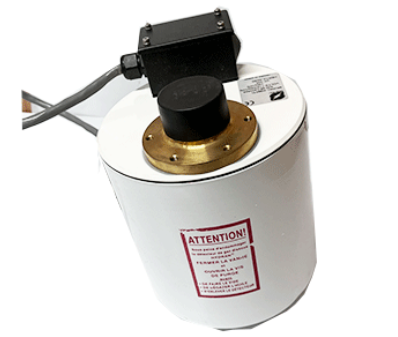Observation on ecological restoration of abandoned open-pit mines in the Yangtze River Economic Belt

Mine restoration requires a large amount of soil cover, the cost of buying soil from a distance is high, and it is difficult to find soil that can be used near the mining area. How to find a suitable soil source?
At the project acceptance meeting, a representative of the construction unit gave the answer: "We summarized two effective methods, which were promoted in Zhaotong City." On the one hand, find local villagers who are ready to build a homestead, free to help them dig the foundation and buy it at a low price. On the other hand, the slope of the local villagers will be leveled (slope modification), and the excess soil will be purchased at a low price, or the soil will be taken for free by cleaning the reservoir and fish pond for the local people, so that the people and we can get a win-win situation!"
The reporter learned that some projects sorted out a large amount of land in the implementation, but did not use the link between increase and decrease and market-oriented policies. Why is that?
"The policy procedures and requirements for linking the increase and decrease of urban and rural construction land are relatively complicated, and the task period of the ecological restoration project of the Yangtze River Economic Belt is only two years, which is too late; Moreover, most of the mining areas in the project area are in remote mountainous areas, and the conditions for utilizing marketization policies are poor. Zhaotong has few land and many people, and the abandoned industrial and mining land is basically restored into dry land, garden land and forest land according to the wishes of the local people, which not only improves the ecological environment of the mining area but also provides land resources for the local people to carry out agricultural production, especially the development of characteristic agriculture, which is conducive to consolidating the achievements of poverty alleviation in the Wumeng Mountain area." Zhaotong City natural resources Bureau ecological restoration section chief said.
There is no coincidence. There are many mining pits in the abandoned open-pit quarry formed by limestone mining of abandoned building stones in Hainan Village, Yulong County, Lijiang City, Yunnan Province, which has serious soil erosion and hidden danger of local disaster. To this end, the local investment of 1.54 million yuan to restore 305 mu of mining ecology. According to the policy and the wishes of the villagers, economic forest land has been planted in the relatively gentle site around the mining area, which has increased the income of some farmers. The remaining abandoned land is covered with soil and backfilled, planted with cedar, winter cherry, and sown with grass on more than 200 mu, achieving maximum ecological benefits with minimal investment.
Sum up experience and build up advantages
The Wujiang River and Chishui River, two important water channels in "Colorful Guizhou", are important tributaries of the upper reaches of the Yangtze River, and are also the main fronts for Guizhou to carry out ecological restoration of abandoned open-pit mines in the Yangtze River Economic Belt, involving 18 counties (cities and districts) of 5 cities (prefectures) in Guiyang, Zunyi, Bijie, Tongren and Qiannan Buyi and Miao Autonomous Prefecture, and 364 abandoned open-pit mines.
In Wanshan district of Tongren city, Guizhou province, private enterprises are introduced to develop industrial tourism, and old mining areas are transformed into scenic spots. The picture shows cinnabar Ancient Town.

In the "Protecting the ecology of the Upper Two Rivers, Painting the green waters and mountains in Guizhou", Guizhou Province set up a working group to incorporate the ecological restoration of abandoned open-pit mines in the Yangtze River Economic Belt into the functional performance target assessment of the provincial government, arrange the deployment on a quarterly basis, and vigorously promote it. The Department of Natural Resources of Guizhou Province has always taken the requirement of "jointly grasping great protection and not engaging in great development" as the starting point to promote the work, and assumed the political responsibility of ecological protection and restoration.
The reporter learned that Guizhou's typical experience has three aspects. First, it has achieved the "three accuracies" of mapping, design and implementation. Professional and technical personnel were organized to conduct field surveys of abandoned open-pit mines within 10 kilometers of the banks of the Wujiang and Chishui rivers, and provincial expert groups conducted spot checks and verification of geological environmental problems in mines to ensure accurate and effective restoration data. The county-level natural resources department organized professional technical units to prepare restoration plans, and the municipal level organized experts to review and approve the report to the provincial Department of Natural Resources for the record, to ensure that each mine restoration standard meets the requirements of the technical regulations. Finally, according to the design scheme, the construction unit is selected through public bidding, the supervision unit is hired to supervise the whole project, and the provincial Environmental Monitoring Institute is entrusted to supervise and guide.
- EMERSON
- Honeywell
- CTI
- Rolls-Royce
- General Electric
- Woodward
- Yaskawa
- xYCOM
- Motorola
- Siemens
- Rockwell
- ABB
- B&R
- HIMA
- Construction site
- electricity
- Automobile market
- PLC
- DCS
- Motor drivers
- VSD
- Implications
- cement
- CO2
- CEM
- methane
- Artificial intelligence
- Titanic
- Solar energy
- Hydrogen fuel cell
- Hydrogen and fuel cells
- Hydrogen and oxygen fuel cells
- tyre
- Chemical fiber
- dynamo
- corpuscle
- Pulp and paper
- printing
- fossil
- FANUC
- Food and beverage
- Life science
- Sewage treatment
- Personal care
- electricity
- boats
- infrastructure
- Automobile industry
- metallurgy
- Nuclear power generation
- Geothermal power generation
- Water and wastewater
- Infrastructure construction
- Mine hazard
- steel
- papermaking
- Natural gas industry
- Infrastructure construction
- Power and energy
- Rubber and plastic
- Renewable energy
- pharmacy
- mining
- Plastic industry
- Schneider
- Kongsberg
- NI
- Wind energy
- International petroleum
- International new energy network
- gas
- WATLOW
- ProSoft
- SEW
- wind
- ADVANCED
- Reliance
- YOKOGAWA
- TRICONEX
- FOXBORO
- METSO
- MAN
- Advantest
- ADVANCED
- ALSTOM
- Control Wave
- AB
- AMAT
- STUDER
- KONGSBERG
- MOTOROLA
- DANAHER MOTION
- Bently
- Galil
- EATON
- MOLEX
- Triconex
- DEIF
- B&W
- ZYGO
- Aerotech
- DANFOSS
- KOLLMORGEN
- Beijer
- Endress+Hauser
- MOOG
- KB


Email:wang@kongjiangauto.com
























































































